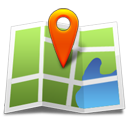Courtesy Karin’s ESL PartyLand
Supermarket Ads
There are a lot of possible activities using supermarket ads. Here’s a good follow-up for food vocabulary, recipes, etc: Bring in multiple copies of supermarket circulars. Put students in groups of three. Tell each group they are friends planning a dinner party. Each group has $75 to spend. After planning their party, each group elects one student to present to the rest of the class. Once all the groups have presented, ask the class to vote on which dinner party they would most like to attend.
Delivery Menus
You can pick up delivery menus from many restaurants. After reviewing menu/food vocabulary, put students in groups of three or four. The task is for groups to decide collectively on what they will have for dinner. (Mention to your students that in the United States, it is common to order food for everyone to share; the bill is usually divided equally.) Give each student a role card.
Possible roles could be:
- “You’re a vegetarian, but you don’t like mushrooms or spinach.”
- “You only have ten dollars to contribute to the meal. You really like spicy food.”
- “You love shrimp. You will be very unhappy if your group doesn’t order at least one shrimp dish.”
- “You have a sensitive stomach and cannot eat spicy food.”
After each group decides they should elect one member of the group to participate in a telephone role-play in front of the whole class.
Labels
You can use either food or clothing labels. For clothing labels, simply bring in approximately seven different garments and hang these in places around the room. Review clothing/laundry vocabulary with the class. Then, give each pair a short worksheet which describes each clothing item (e.g. the plaid Gap shirt, or the wool sweater) and asks the same set of questions for each item.
Some possible questions could be:
- “Are you going to put it in the washing machine, wash it by hand or take it to the dry-cleaners?”
- “Hot, warm or cold water?”
- “Are you going to put it in the dryer, hang it up or dry it flat?”
- “Does it need to be ironed?”
Simple Comic Strips
White-out the text bubbles. Make multiple copies of the same strip. Distribute one per pair. Students work together to fill in the bubbles while you circulate and assist. Once the students are finished, post their comic strips to allow their classmates to compare with the other versions. You may then want to give them the original for class discussion.
Flyers
Save the flyers that you receive in the mail — those that advertise merchandise and services. Bring in multiple copies and have pairs of students each select a few of them.
Pairs can then answer a series of questions. For example:
- What’s being advertised?
- Where is the place located?
- Would you buy this product or service? Why or why not?
For a writing activity, have students design a flyer for a product or service to share with the class.
Other Ideas
You could also try using bills, classifieds, pictures of signs, recipes, CD inserts, or postcards. Just make sure that you provide enough structure by giving specific tasks. Otherwise, you’ll run the risk of frustrated students staring blankly at an overwhelming array of information.







Become a fan and join the community.
Get connected to our network.
Subscribe and stay current.